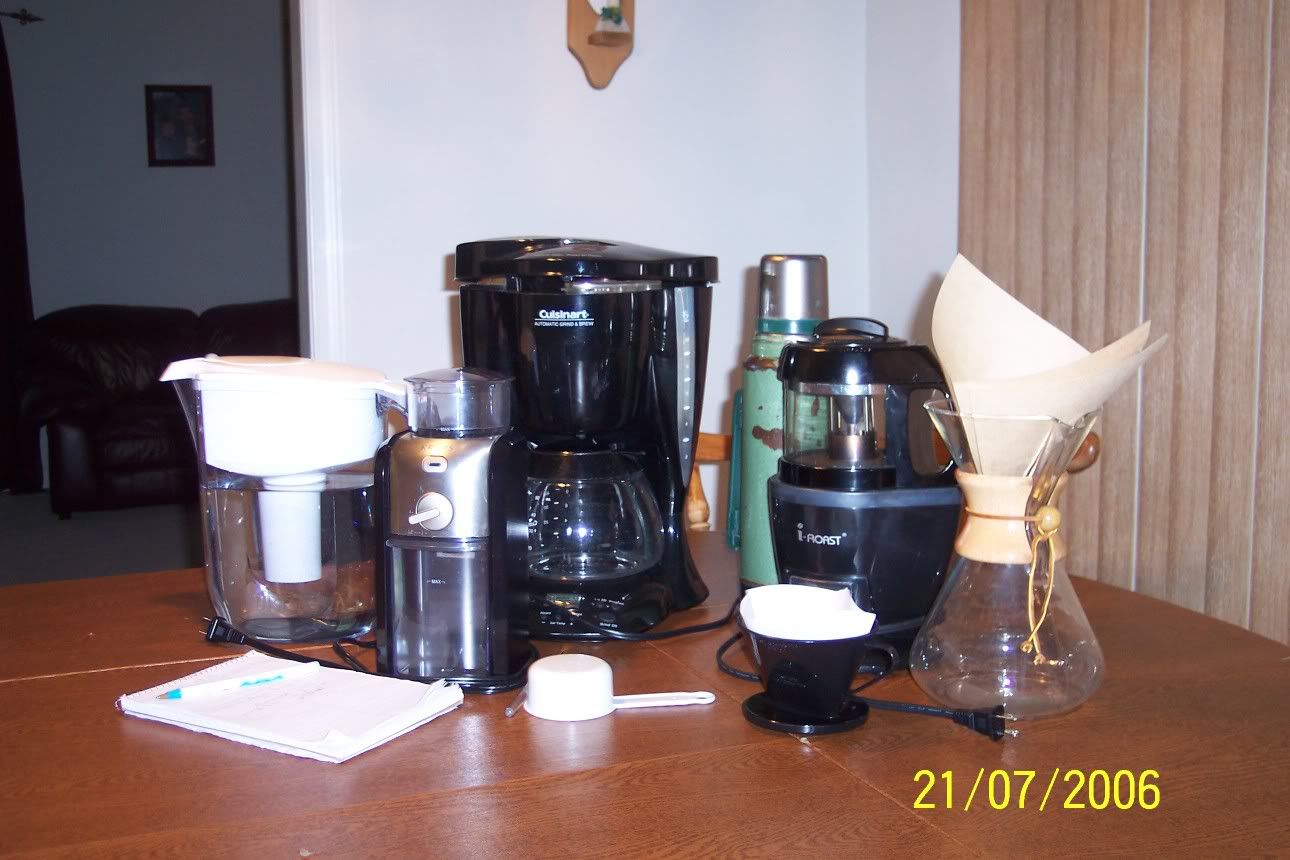This coffee looks a bit dark, but not at all oily. The roast is also not particularly even, which was a feature of the last Guatemalan that I roasted.
My Gear
Here is a photo of all of my roasting gear:
Starting from the left, you can see the Britta filtered water pitcher that I use so ensure I start with good water. (It's silly to go to all the effort I go to to roast my own beans and then use lousy water! Even a strong cup of coffee is mostly just the water you used to brew it!) Next is my Krupps burr mill grinder and my now-retired electric drip coffee maker. (I do still use the carafe to measure the water that I pour into the kettle for boiling though.)
Next to that and towards the back is my much abused but still sound Stanley thermos, made right here in the USA, thank you very much. Next to that, my iRoast I. Next to the iRoast is my Chemex manual drip coffee maker, with a filter already in the cone.
To the left of the Chemex is my Mellita Single Cup Black Plastic Drip Thingy, also with a filter in place. This cheap little device sits on top of my coffee cup, and the coffee drips right into the cup. You have to be careful, though, because you can't tell how full your cup is without looking and if the cup overflows you could end up wasting coffee.
The the left of the Mellita Plastic Thingy is my white 1/2 cup measuring cup and, barely visible, a clear-handled brush that I use to clean out my roaster and grinder. Finally, the paper copy of my roasting journal, along with a random pen.




1 comment:
You know if your coffee is coming out uneven, then lower the amount of beans you put in, it could be because Guatemalans are grown so high they have a higher bean density, and since I didn't notice a scale in you drawings, I assume you are measuring by volume. In the end if it is uneven decrease the batch size, like 15%, and slightly lower roasting temp slightly, because they will roast a little faster.
Post a Comment